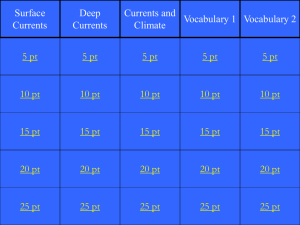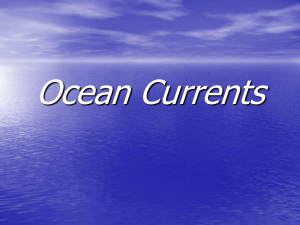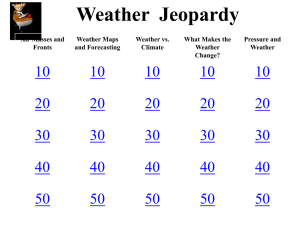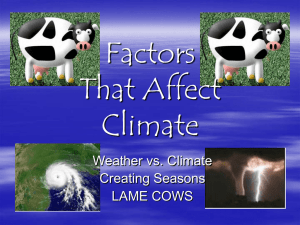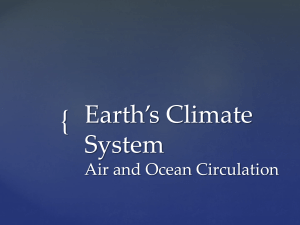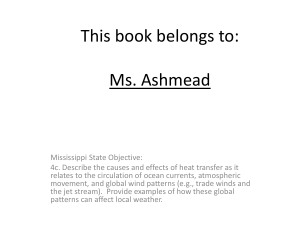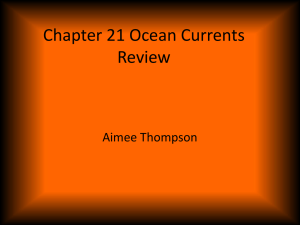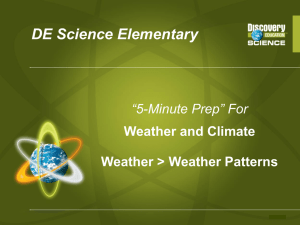Chapter 18: Ocean Motion
advertisement
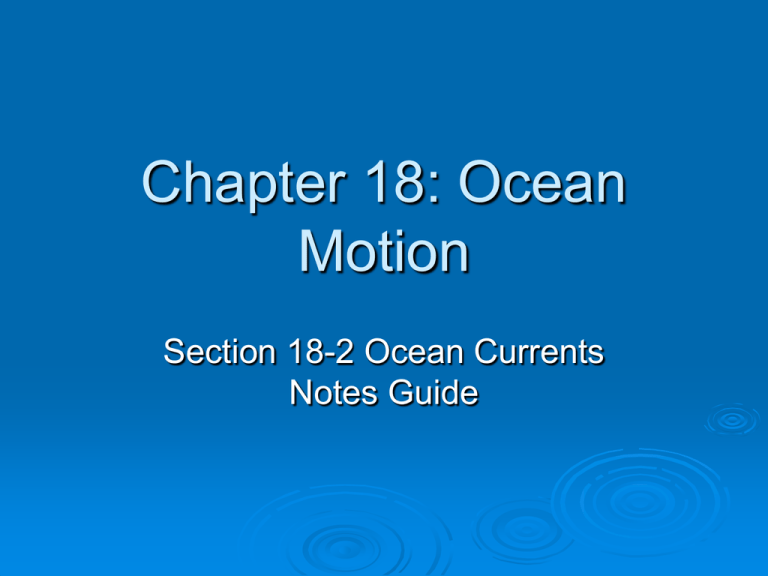
Chapter 18: Ocean Motion Section 18-2 Ocean Currents Notes Guide Surface Currents Ocean currents are a mass movement, or flow, of ocean water. Currents are like rivers within the ocean. Surface currents move water horizontally-parallel to the Earth’s surface. These currents are powered by wind, which forces the ocean to move in huger circular patterns. The currents on the ocean’s surface are related to the circulation of the winds on Earth. Surface currents move only the upper layer of seawater. Ocean Surface Currents How surface currents move Surface ocean currents and winds are affected by the Coriolis Effect. -the Coriolis Effect is the shifting of winds and surface currents from their expected paths that is caused by Earth’s rotation. -Because the Earth rotates toward the east, winds appear to curve toward the right in the northern hemisphere and to the left in the southern hemisphere. -the winds cause the water to pile up in parts of the ocean. When gravity pulls the water off the pile, the Coriolis effects turns the water. -Surface water in north of the equator turns to the right, and currents south of the equator turn to the left. Coriolis Effect How surface currents move continued… The Gulf Stream is a very strong current that brings warm water up from the equator, up the east coast of the U.S., and towards England. -Sailors used the Gulf Stream to travel quickly from North America to England. Surface currents are tracked by drift bottles. These bottles are released in various locations. People record information about where and when the bottle was found, and scientists use that information to learn about surface currents. Gulf Stream Warm and Cold Surface Currents Currents formed on the east coast of continents move warm water from the equator towards the poles. -The Gulf Stream is an east coast current. Currents formed on the west coast bring cold water down from the poles toward the equator. - The California Current is a west coast current. Currents play a key role in distributing heat across the globe, and this transfer of heat influences climate. Upwelling Upwelling is a vertical circulation in the ocean that brings deep, cold water from the ocean bottom to the ocean surface. Wind blowing parallel to coasts carries the water away from land. That warm surface water is then replaced by cold, deep ocean water. Water from the deep ocean is rich in nutrients that come from dead and decayed organisms. This nutrient rich water encourages plankton growth, which in turn attracts fish. Areas of upwelling are important fishing grounds. Upwelling Density Currents Deep in the ocean, water circulated because of density differences, not because of wind. A density current forms when a mass of seawater becomes more dense than the surrounding water. More dense water will sink below less dense water. -Saltier water is more dense than fresh water. - Cold water is more dense than warm water.. Density currents circulate ocean water slowly. Oceanic Conveyer Belt


